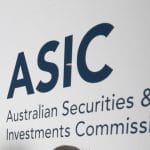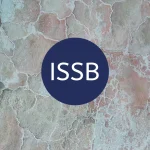ESAs Propose New SFDR Categories to Combat Greenwashing and Enhance Investor Clarity

Executive Summary
The European Supervisory Authorities (ESAs) have proposed new categories for financial products under the Sustainable Finance Disclosure Regulation (SFDR) to address greenwashing and improve clarity for investors. The proposed categories, “Sustainable” and “Transition,” aim to provide clear criteria for sustainable investments and enhance consumer protection.
Key Impact Points:
- Introduction of new categories: “Sustainable” and “Transition” categories to improve clarity and reduce greenwashing.
- Sustainability indicator: A new scale to grade financial products’ sustainability profiles.
- Enhanced disclosures: Stricter rules for products with sustainability features to prevent misleading marketing.
The European Supervisory Authorities (ESAs) have proposed significant updates to the Sustainable Finance Disclosure Regulation (SFDR), including introducing “Sustainable” and “Transition” categories for financial products. This move aims to clarify sustainability claims and reduce greenwashing risks.
Background: The ESAs, comprising the European Securities and Markets Authority (ESMA), the European Banking Authority (EBA), and the European Insurance and Occupational Pensions Authority (EIOPA), have responded to the European Commission’s comprehensive review of the SFDR framework. This review seeks to harmonize transparency rules for financial market participants regarding sustainability risks and impacts.
Current Issues: The SFDR currently classifies funds under ‘Article 8’ (promoting environmental or social characteristics) and ‘Article 9’ (having sustainable investment as an objective). These classifications have inadvertently become de-facto sustainability labels, potentially leading to greenwashing.
Proposals:
- New Categories: The “Sustainable” category will include products investing in environmentally or socially sustainable activities, meeting minimum thresholds like EU Taxonomy alignment. The “Transition” category will cover products aiming to become sustainable over time. “The ESAs are in favour of the introduction of regulatory product categories that would help address the greenwashing problems arising from the misuse of the disclosures under Article 8 and Article 9 of the SFDR and generate clarity for investors, in particular retail investors,” stated the ESAs.
- Sustainability Indicator: A new indicator will grade financial products to simplify complex sustainability information for consumers.
- Enhanced Disclosures: For products with sustainability features that don’t qualify for the new categories, there will be stricter disclosure requirements and restrictions on using ESG-related terms in marketing. Products without sustainability features must include disclaimers and minimal disclosure on negative impacts.
Challenges: The ESAs also highlighted the confusion caused by parallel concepts of ‘sustainable investment’ under SFDR and the EU Taxonomy. They suggest the Taxonomy could serve as a science-based reference for measuring sustainability performance.
Market Reaction: The European sustainable investment association Eurosif largely supports these proposals but stresses the need for strict safeguards against greenwashing for products that use ESG terms without fitting into the new categories.
“To further prevent greenwashing, and should the ESAs’ suggested classification be implemented, this should be allowed only as long as there are strict safeguards, including the demonstration that these products do not harm sustainability objectives,” said Eurosif.
Related Article: EU Council Adopts Position on Green Claims Directive to Combat Greenwashing and Protect Consumers
The ESAs’ assessment is a step towards refining the SFDR framework, aiming for clearer, more reliable sustainability disclosures and categories, ultimately benefiting both consumers and the environment.












